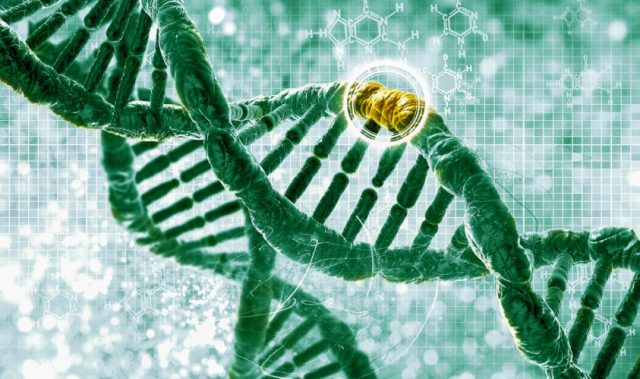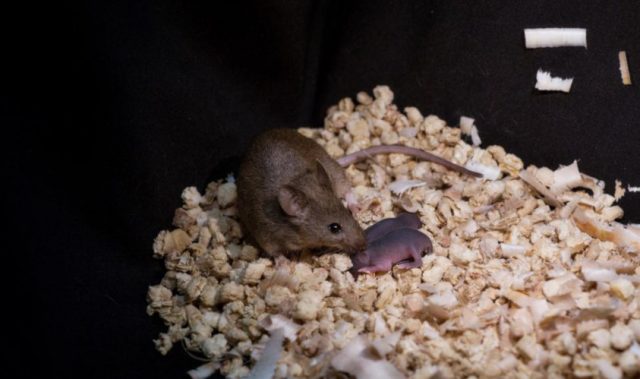
AsianScientist (Jul 17, 2014) – The ability to edit defective genes brings with it both promise—the hope of fixing disease-causing genes in humans, for example—as well as questions and safety concerns. Now, scientists have put one of those concerns to rest: using gene-editing techniques on stem cells doesn’t increase the overall occurrence of mutations in the cells. Their results have been published in the journal Cell Stem Cell.
“The ability to precisely modify the DNA of stem cells has greatly accelerated research on human diseases and cell therapy,” says senior author Juan Carlos Izpisua Belmonte, professor in Salk Institute’s Gene Expression Laboratory. “To successfully translate this technology into the clinic, we first need to scrutinize the safety of these modified stem cells, such as their genome stability and mutational load.”
When scientists want to change the sequence of a stretch of DNA inside cells—either for research purposes or to fix a genetic mutation for therapeutic purposes—they have their choice of two methods. They can use an engineered virus to deliver the new gene to a cell; the cell then integrates the new DNA sequence in place of the old one. Or scientists can use what’s known as custom targeted nucleases, such as TALEN proteins, which cut DNA at any desired location. Researchers can use the proteins to cut a gene they want to replace, then add a new gene to the mix. The cell’s natural repair mechanisms will paste the new gene in place.
Previously, researchers had used modified viruses, called helper-dependent adenoviral vectors (HDAdVs) to correct the gene mutation that causes sickle cell disease. Using HDAdVs to replace the mutated gene in a line of stem cells with a mutant-free version, the team created stem cells that could theoretically be infused into patients’ bone marrow so that their bodies create healthy blood cells.
Before such technologies are applied to humans, though, the researchers wanted to know whether there were risks of editing the genes in stem cells. Even though both common gene-editing techniques have been shown to be accurate at altering the right stretch of DNA, scientists worried that the process could make the cells more unstable and prone to mutations in unrelated genes—such as those that could cause cancer.
“As cells are being reprogrammed into stem cells, they tend to accumulate many mutations,” says Dr. Li Mo, a postdoctoral fellow in Belmonte’s lab and an author of the present study. “So people naturally worry that any process you perform with these cells in vitro—including gene editing—might generate even more mutations.”
To find out whether this was the case, Belmonte’s group, in collaboration with BGI and the Institute of Biophysics, Chinese Academy of Sciences in China, turned to a line of stem cells containing the mutated gene that causes sickle cell disease. They edited the genes of some cells using one of two HDAdV designs, edited others using one of two TALEN proteins, and kept the rest of the cells in culture without editing them. Then, they fully sequenced the entire genome of each cell from the four edits and control experiment.
While all of the cells gained a low level of random gene mutations during the experiments, the cells that had undergone gene-editing—whether through HDAdV—or TALEN-based approaches—had no more mutations than the cells kept in culture.
“We were pleasantly surprised by the results,” Keiichiro Suzuki, a postdoctoral fellow in Belmonte’s lab and an author of the study, says. “People have found thousands of mutations introduced during iPSC reprogramming. We found less than a hundred single nucleotide variants in all cases.”
The finding, Li adds, doesn’t necessarily mean that there are no inherent risks to using stem cells with edited genes, but that the editing process doesn’t make the stem cells any less safe.
“We concluded that the risk of mutation isn’t inherently connected to gene editing,” he says. “These cells present the same risks as using any other cells manipulated for cell or gene therapy.”
The researchers are planning more studies to address whether gene-repair in other cell types, using other approaches, or targeting other genes could be more or less likely to cause unwanted mutations. For now, they hope their findings encourage those in the field to keep pursuing gene-editing techniques as a potential way to treat genetic diseases in the future.
The article can be found at: Suzuki et al. (2014) Targeted Gene Correction Minimally Impacts Whole-Genome Mutational Load in Human-Disease-Specific Induced Pluripotent Stem Cell Clones.
——–
Source: Salk Institute.
Disclaimer: This article does not necessarily reflect the views of AsianScientist or its staff.












